|
Memo tourists arriving in Paris Bastille in Paris, no. There are Place de la Bastille and Metro Station, but the Bastille fortress is not there - it was destroyed during the Revolution. However, the guides are very like it when tourists get trapped with surprised the question "where is the castle?"
For the experiment, set the familiar question "What color is the Eiffel Tower?". The answers that I received: "black, green, silver," etc. Do not know, maybe it in the movies and cartoons depict the wrong color? .. In fact, the Eiffel Tower beige-gray, and the sun, depending on the angle, lighting up the gold. 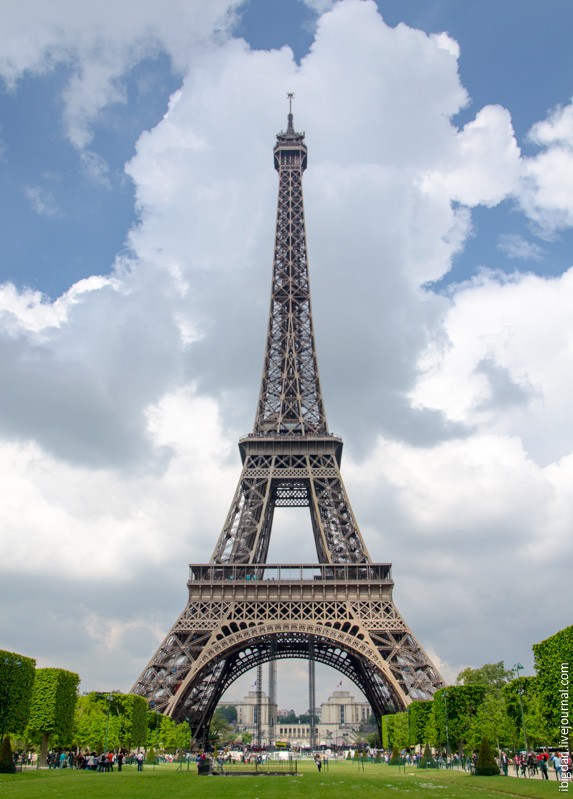 Here is a color close. Maybe it repainted regularly, so all wrong with the color? .. 
And here came the sun behind the clouds, golden glow clearly visible:  Eiffel Tower will not disappoint you - really huge and beautiful. And such "female", with legs in fishnet stockings:  Perhaps that is why a lot of people goes "look under the skirt" 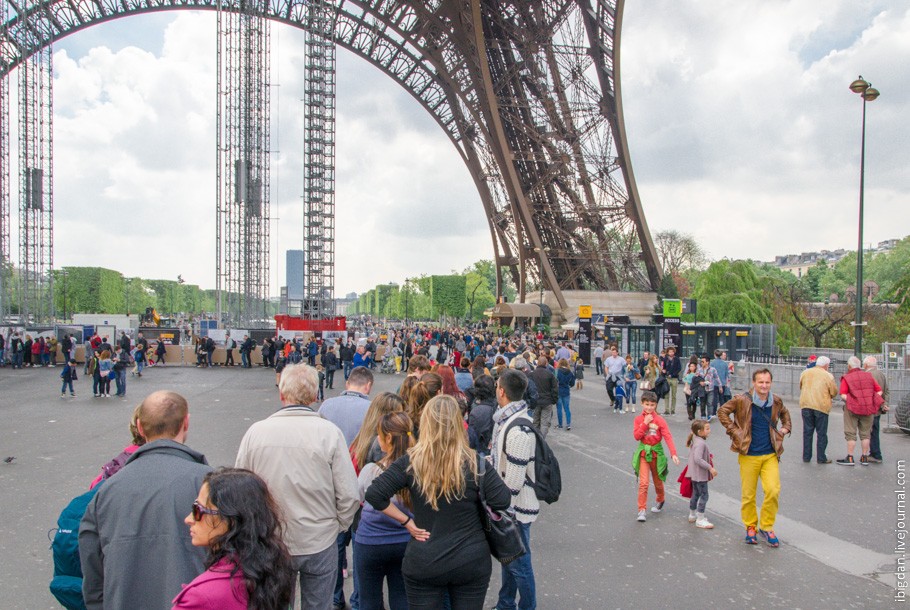 Also, you will not disappoint Notre Dame de Paris: beautiful, majestic, clogged with tourists to the top. 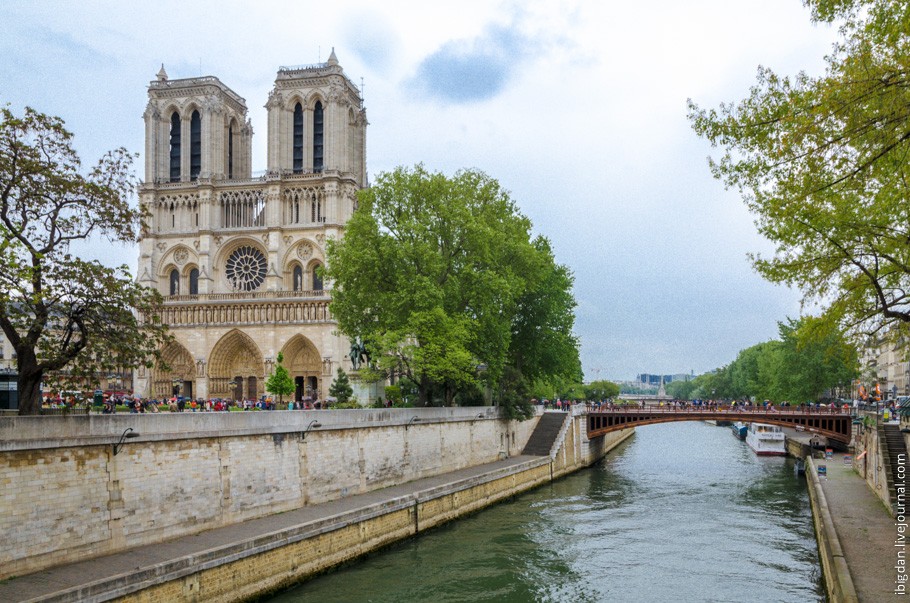 Cathedral was undergoing renovation, so now does not look quite "historically accurate", such chimeras on the facade set in their understanding restorer Viollet-le-Duc. 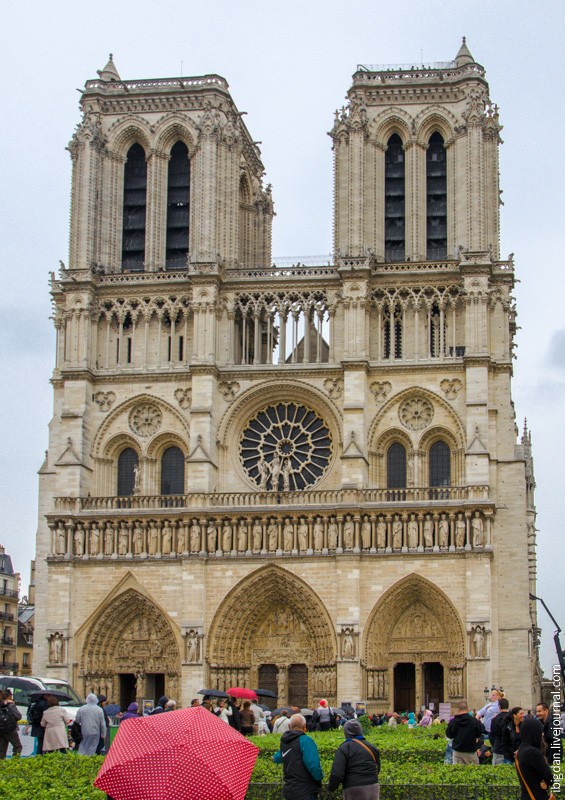 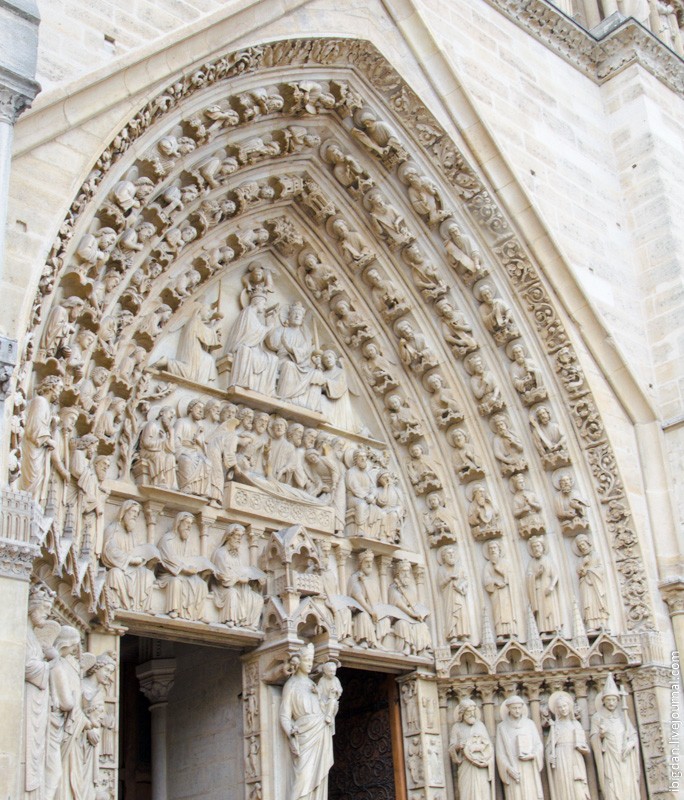 Continue "memo   There is a concert hall "Olympia" , which from 1929 to 1944 was a movie theater, but that's clearly not the period of popularity of the Lumiere brothers.  In Seine river water color marine, teal. Floating down the river tourist garbage in large quantities, but the water itself is kind of like a clean, even the beaches in the country is.  Another potential disappointment Esliseyskie field - no not the field, except that compared Montmartre. There streets close, and the Champs Elysees wide, park, large buildings. "Fields" in the conventional sense to us there. 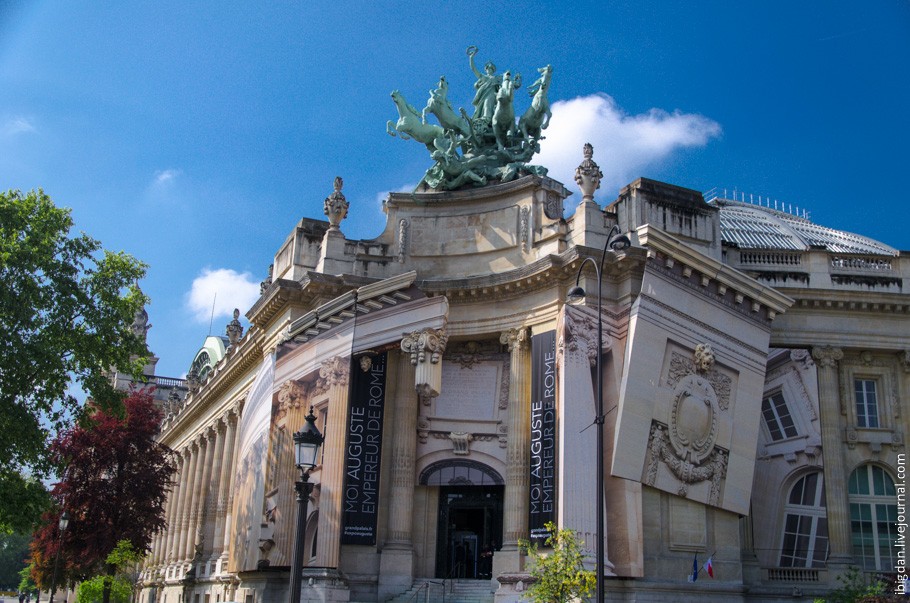 In fact, before they were fields, but then there made way for coaches and sidewalk for pedestrians and pozzhepoyavilis home, which cut the field to a wide street 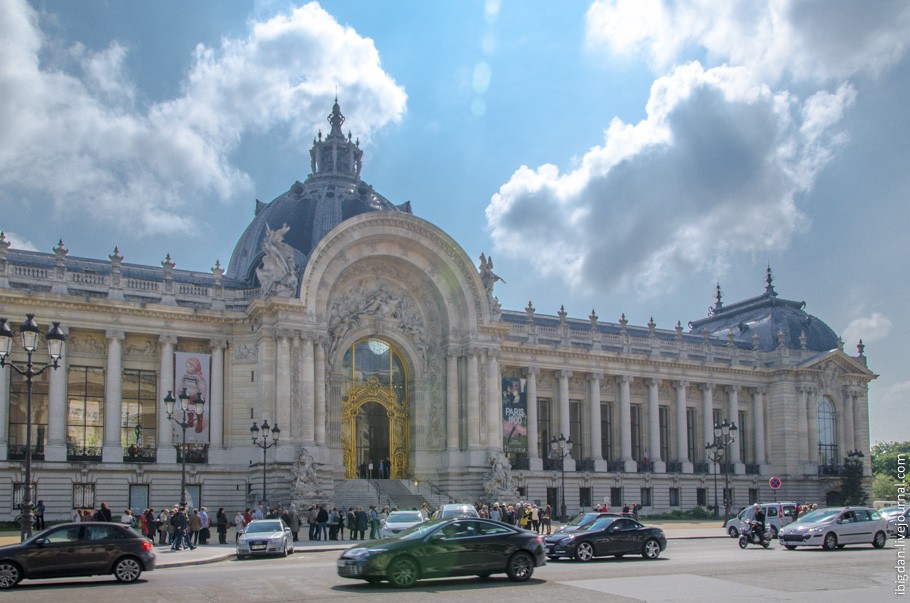 But the Champ de Mars under the Eiffel Tower - indeed field. Here are just trees on it from Maynkrafta: 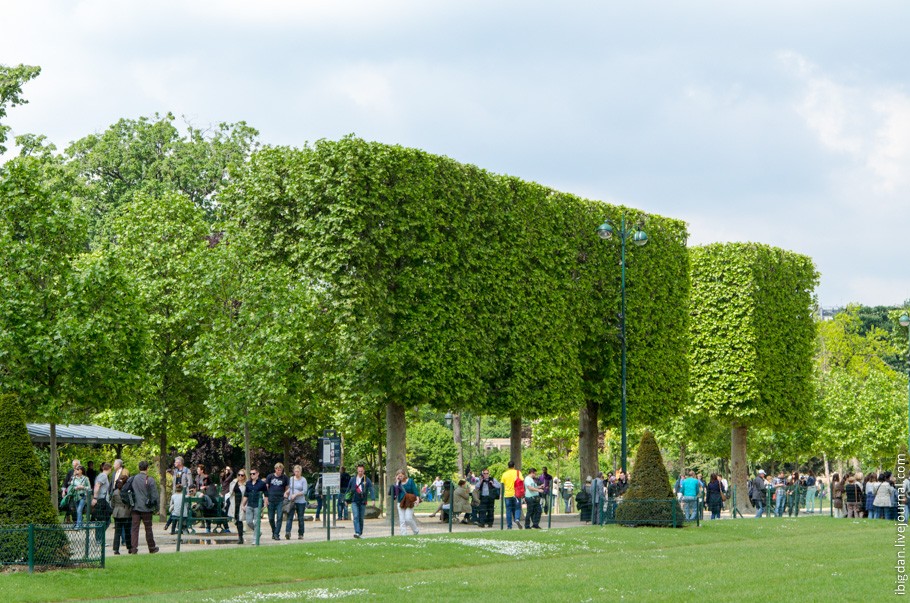 Further. Montmartre, romantic and grassiruyuschy Monmarrrrtr turned Japanese-Chinese district. All Chinese living in Paris almost more than the Arabs.Remember the movie "District 13"? Under the scenario where Arabs live and some Europeans. And actually live there Well, the Chinese and some Arabs.  Montmartre, and indeed in Paris a lot of cafes, restaurants - the main streets they go just a row between them barely squeezed shops and hotels. And it all works until 12 at night, and cafes densely filled with seven in the evening - this time from the French begins "lunch", which lasts till night. Favorite restaurant - it's not just food, but also a place to meet friends. 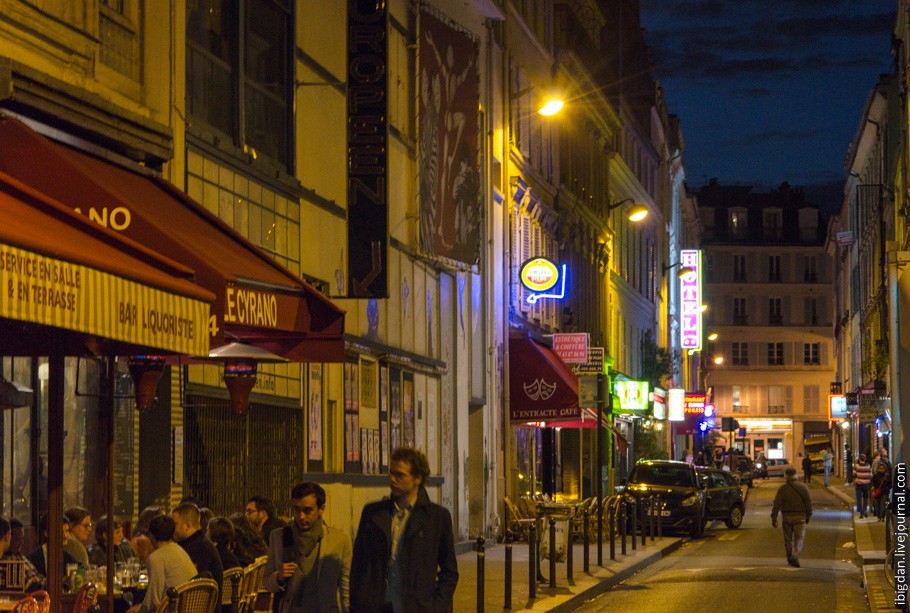 Speaking of food. Very often you can see the man at the table, happy to tuck into a burger and fries. They are cooked in this restaurant, the menu they had a full section and is popular with French food, but the question arises - how is this different from McDonald's? There is the same burger and fries, but the French do not respect McDonalds and half visitors there - Arabs and negros. Chinese in McDonald's not because they eat in Chinese restaurants, of which a great many of Montmartre. In one of these Chinese restaurants I have poisoned rice with shrimp and lost half of the day in the hotel room, scaring faience friend: ( Next - chestnuts. They can come as a shock to Kiev, confident that "Kiev - the city of chestnuts." The fact that in Europe, this tree is also very fond of, but in Paris, chestnuts seated all that you can. These two photos are removed from one place: kilometer chestnuts in one direction to another kilometer: 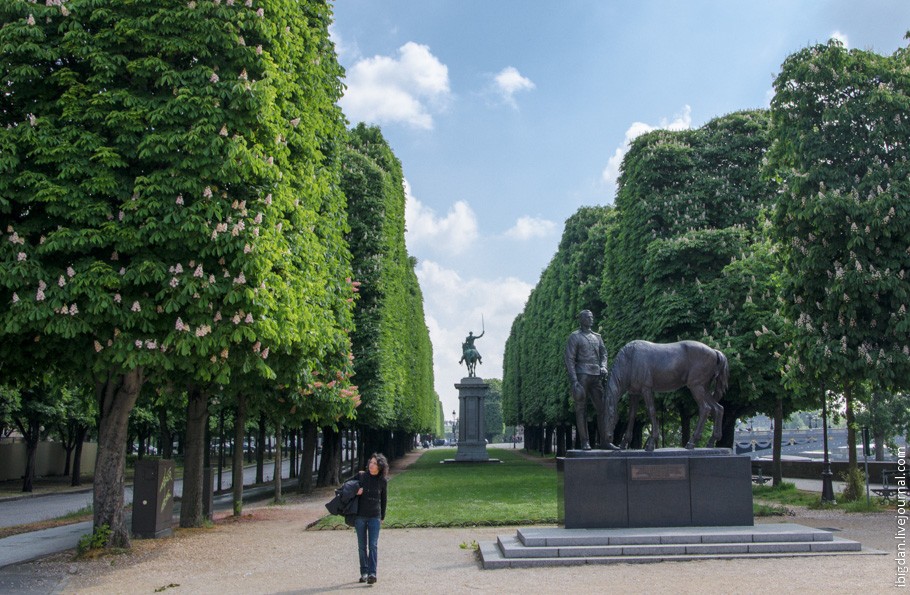 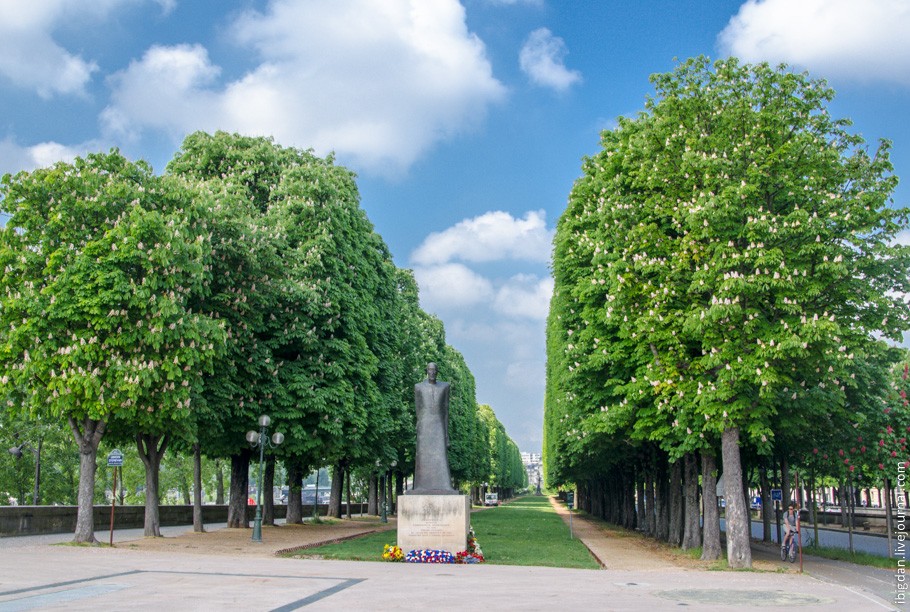 Moreover, in Europe, resp. Paris meets a stranger to me kind of chestnuts - with red flowers:  These can then roast chestnuts and sell? .. Ordinary white chestnuts for this are not suitable. Let's go further. Metro in Paris is very old and shabby close. Guided outsider it is difficult for two reasons: 1. French language, in which the pronunciation has nothing to do with the writing Of course, I'm exaggerating, but really difficult to understand where the scheme is just called the station. 2. Ambiguous relationship direction and destination. That we have this thread if the train goes right, then that means that the Forest, and if the left, then to Akademgorodok. And they have a road through a couple of stops "razdvoyaytsa" and your train can go to another point, just like the tram. Therefore, the platform need to watch the scoreboard - where indicated, where riding this train, but at first strange. By the way, sometimes in a Paris subway platform are not located opposite each other and offset: 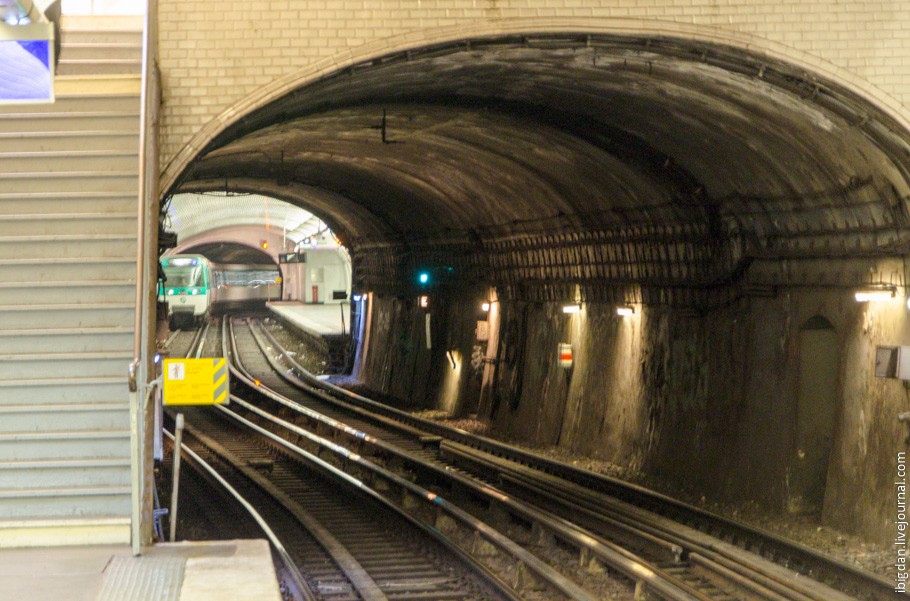 Probably because they occupy less space. Here there are automated lines, without a driver. You can recognize them by their characteristic platforms:  Here, access to a car as arranged in the elevator, through double doors. You need to properly train park to the door of the car and platform doors match.Since the park is not a man, and automatic, then no problem with that. In some branches of cars ride on rubber wheels:  Instead there is ample rail platforms, the sensations this car softer and quieter. All this suggests that the metro in Paris is very old and not built on orders from above, but gradually. Times have changed - and changing technology. Happy homeless in the subway not because subway entrance fee, but by night they somehow make their way there. Somewhere police chasing them, somewhere not result in Gare du Nord (North Station) are all so pissed that it is impossible to be on the platform because of the smell. Homeless - one of the main problems of Paris, a lot of them and they are everywhere. A lot of them because the socialist power with them lisp feeds, distributes condoms, not shorter life, and resort. Among the many homeless young healthy guys who just do not want to work. There are creative personality:  So he begs for bait  The second problem of Paris - the trash. Quite the usual form for the street:  Litter not only tourists and the homeless, the locals a different attitude toward the debris, as the norm, no one steamed. Of course, the streets clean and even washed regularly, but in the evening again all littered.  Incidentally, since Montmartre - this hill there is the issue resolved Street washing original: hilltop include water, where she spreads on the streets  Sometimes the garbage on the street has a political origin. I stumbled upon some sort of action in which unidentified activists scattered pieces of paper passed through the shredder (not Gerhard).  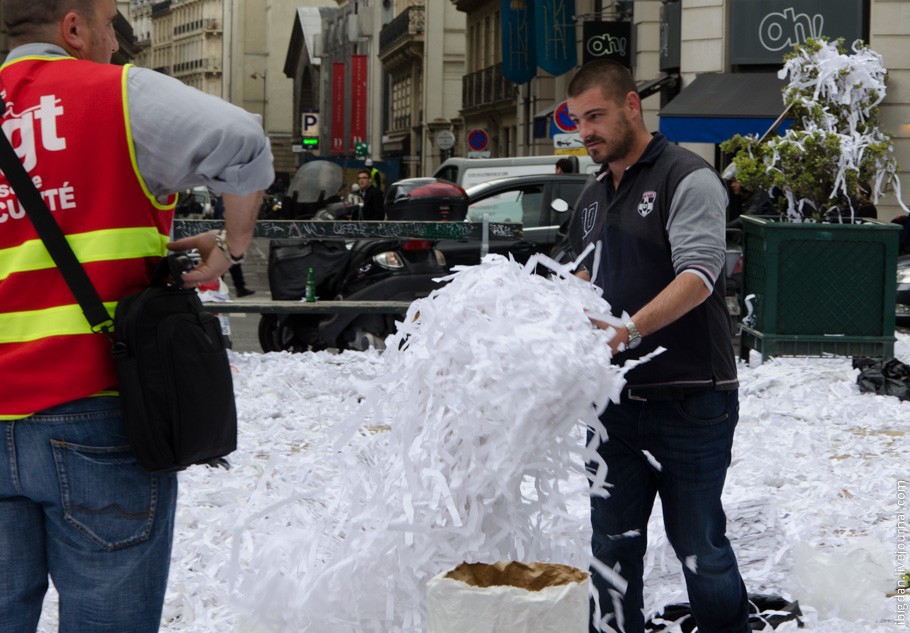  I really wanted to figure out Can you understand, what have they written? 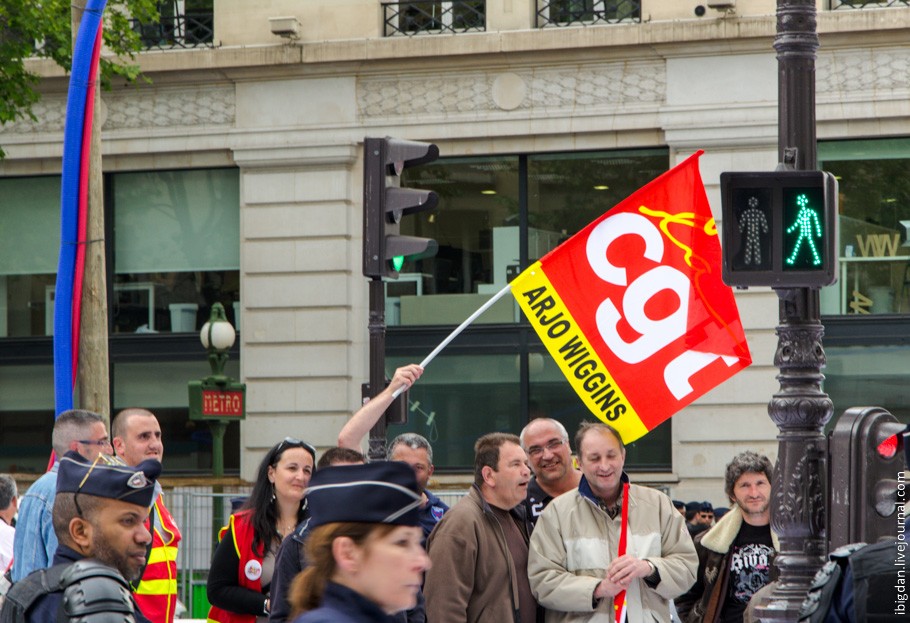  Closing theme of debris: if you say that the whole of Paris zasrali - do not believe. Plenty of clean streets, even in tourist areas. 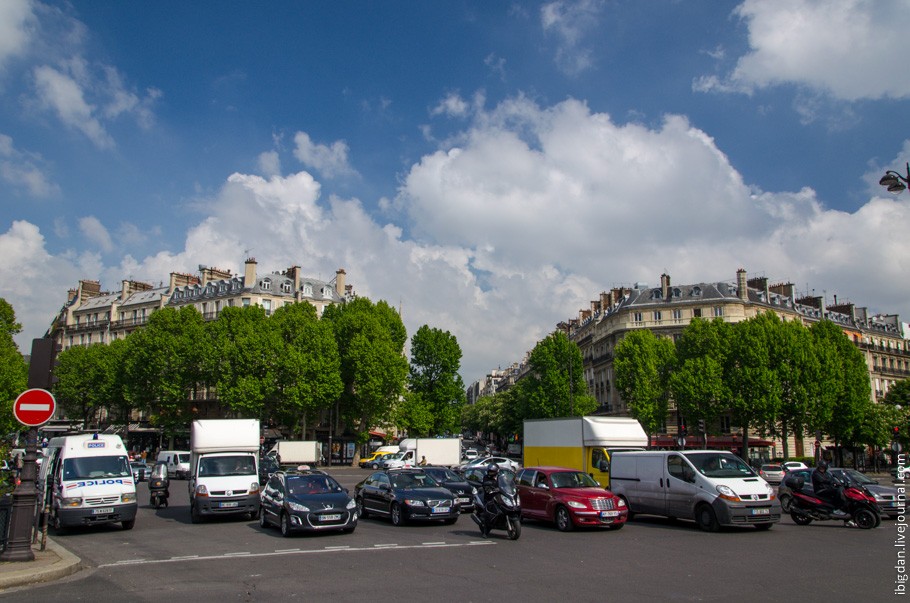 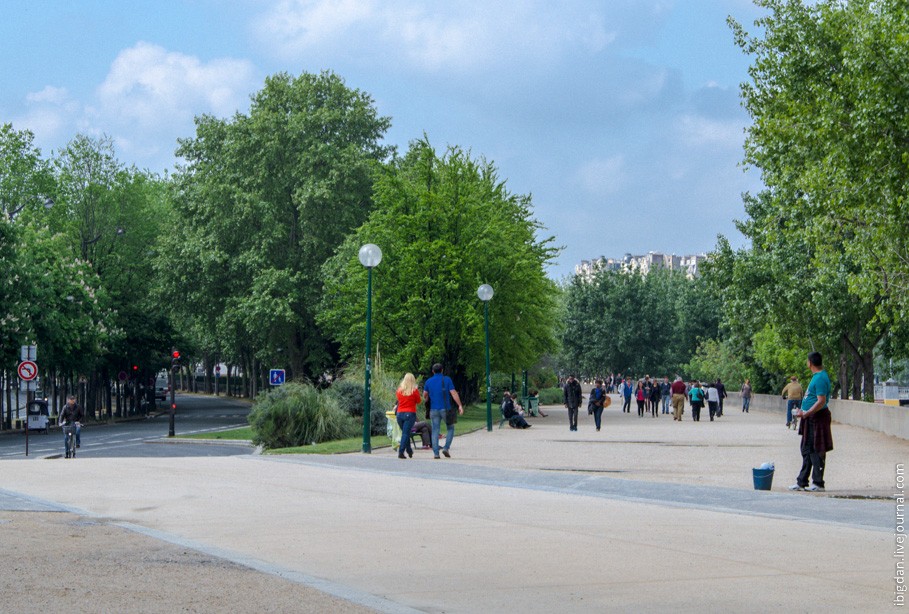 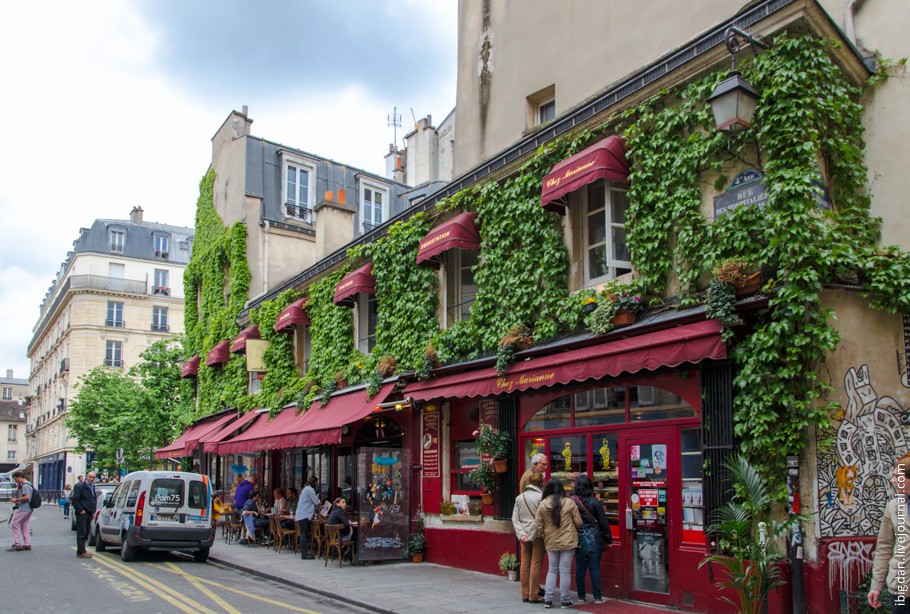 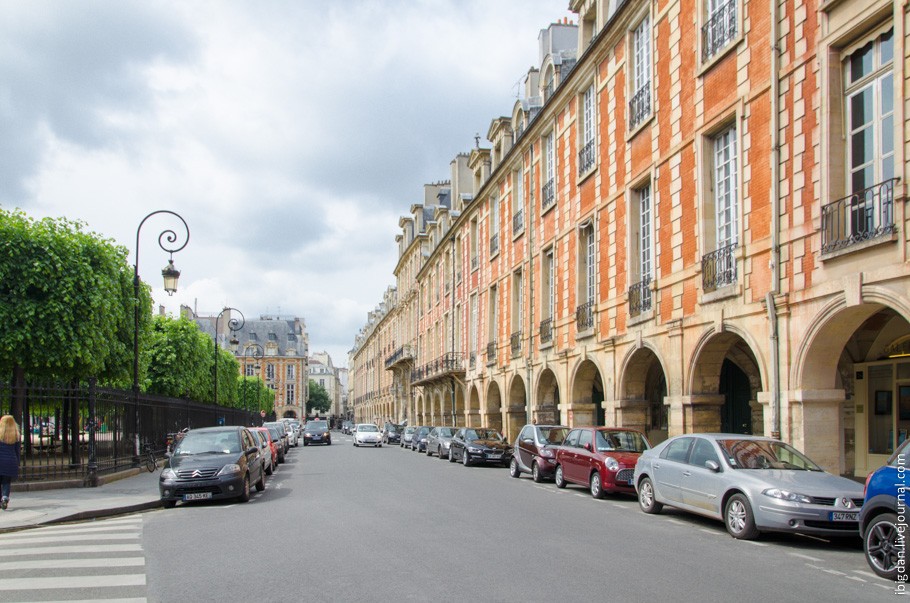 Lots of old (very old) buildings in good condition - the state caring for them. In the photo above - the royal estate, it also Vosges area. It is a monument of Louis XIII , the man who was married to Anne of Austria .  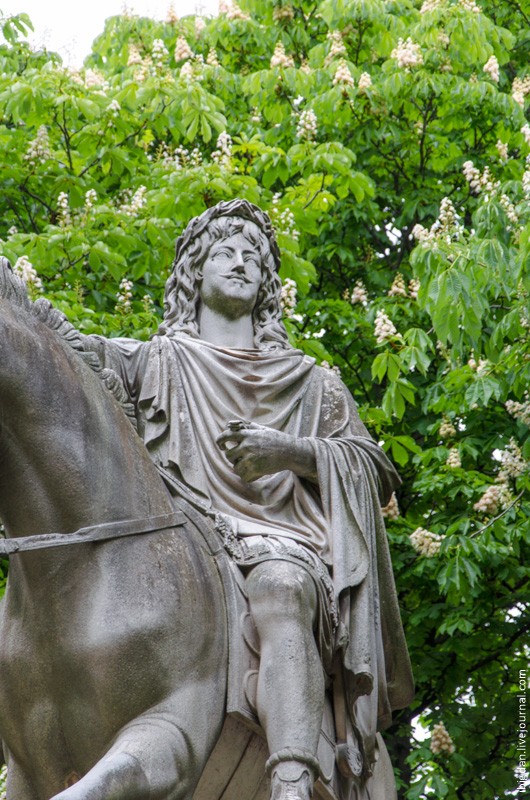 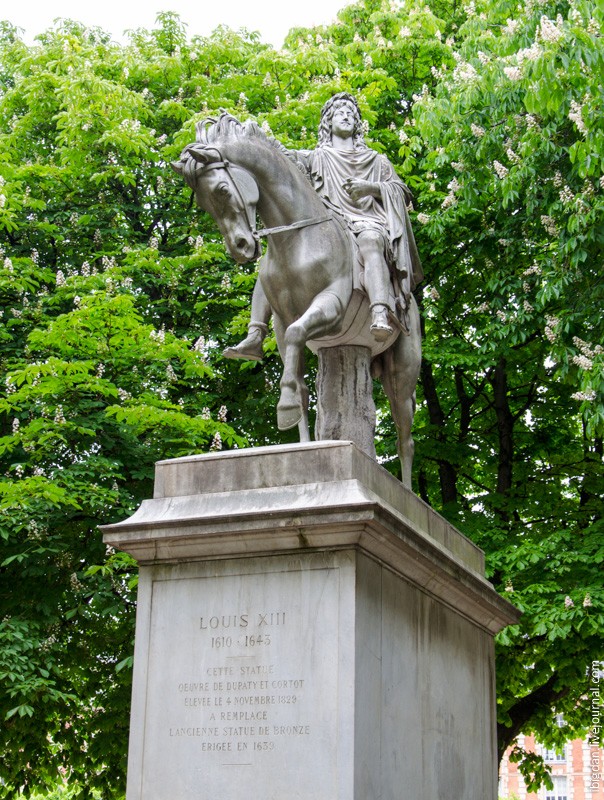 Note: in French it is spelled as Louis, and not as Louis. Where did this "Louis" and why half of the French kings so called? A couple of thousand years ago, the German name Hlodwig (glorious winner) began to move into other languages. In Germany, it gradually evolved a to Ludwig. A first in France was Latinized (replacement fricative x) to Clodovicus - in the VI century Clovis (Clovis) was the founder of the kingdom of the Franks - that's why his name is often anoint French kings. Later on, the second letter of the name in the French version of "fallen off" and turned to Clovis Louis (read as "Louis"). Meanwhile, in medieval Latin was another process, which resulted in Clodovicus turned into Ludovicus. In the Middle Ages, Russian diplomats were due to foreign kings only in Latin. The other side also replied to them in Latin, so that the translation of royal charters Russian Tsar romanized names. So French Louis began in Russian language Lyudovikusami. Under Peter I Latin names cut in German style, removing closure: Lyudovikus - Louis. Another not too lucky Frenchman Henri in Russia called Henry, the Spaniard Felipe - Philip Englishman James - James. A Bavarian Ludwig - Louis too, so they'd be no hard feelings. 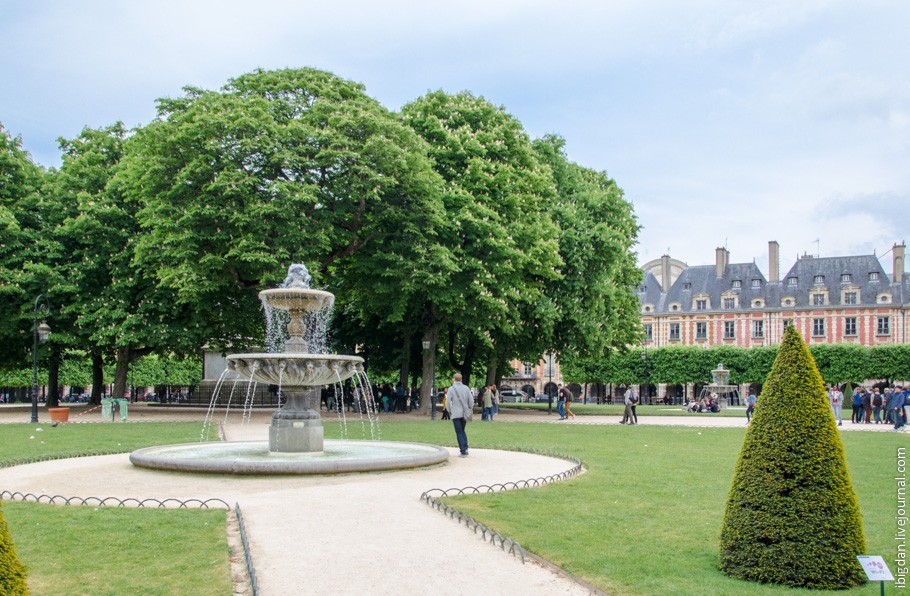 Of course, not all the kings of France were "Luyami" (as this is the correct plural?), And this area named Louis XIII and all built by his father - Henry IV , founder of the French Bourbon kings. On this area at different times lived many famous people, such as poet and writer Theophile Gautier. "Captain Fracassi" a child read?  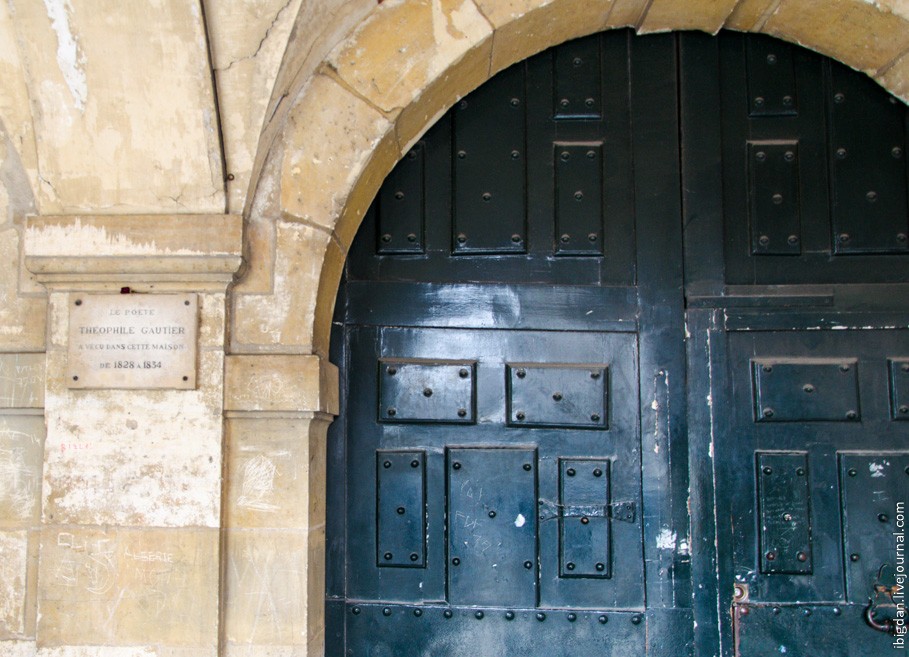 A little to the right Victor Hugo once lived. Now his house is a museum, which, unfortunately, do not remove. There's a whole floor dedicated to the novel "The Man Who Laughs", which in this time stopittsot times filmed.  Incidentally, one of the most famous adaptations, silent films in 1928, starred Russian actress Olga Baklanov . Memorials and monuments in Paris very much: the old city, and managed to survive the Second World War without any damage. 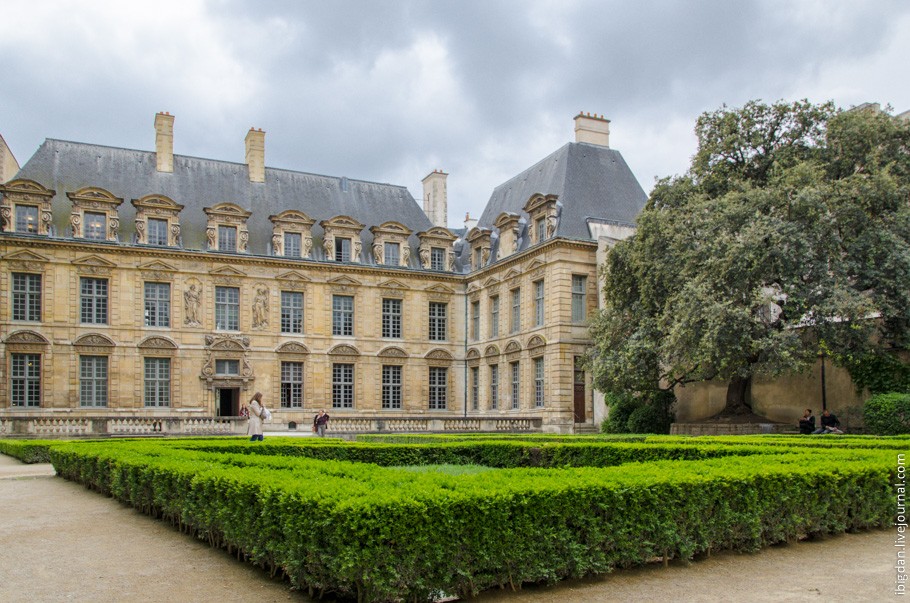  delfin_iya , who has kindly agreed to act as a guide, often use phrases such as "Oh, it's a remake, 19th century." Ok so home soon 200 years and looks good and the people living there. delfin_iya , who has kindly agreed to act as a guide, often use phrases such as "Oh, it's a remake, 19th century." Ok so home soon 200 years and looks good and the people living there. This 16th century hotel is: 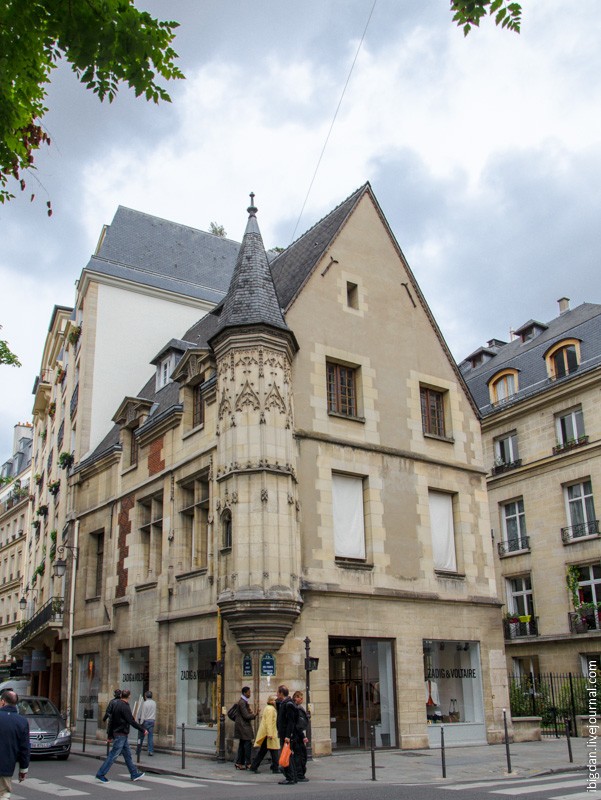 And this half-timbered houses about 800 years. This is the question about the "unreliability of frame construction." 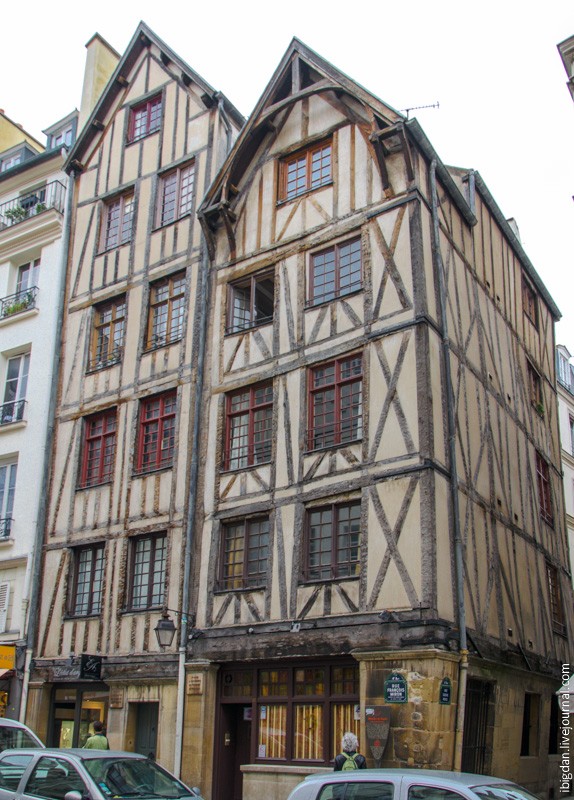 The clock on the church, go to 1627: 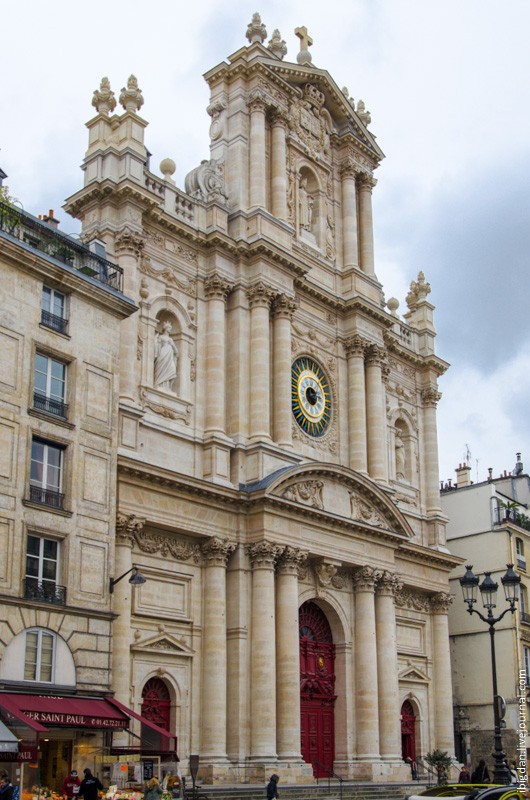 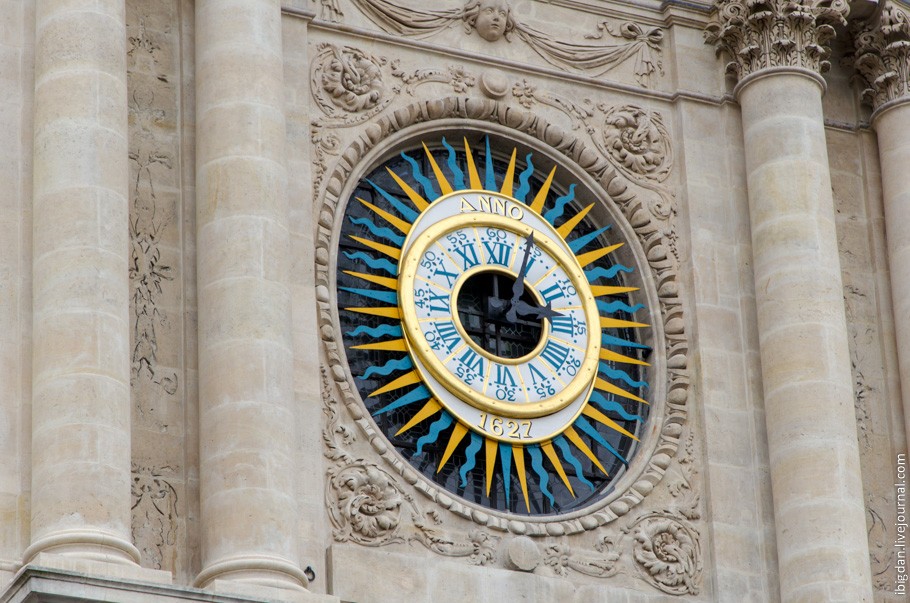 To look at the usual cafe: 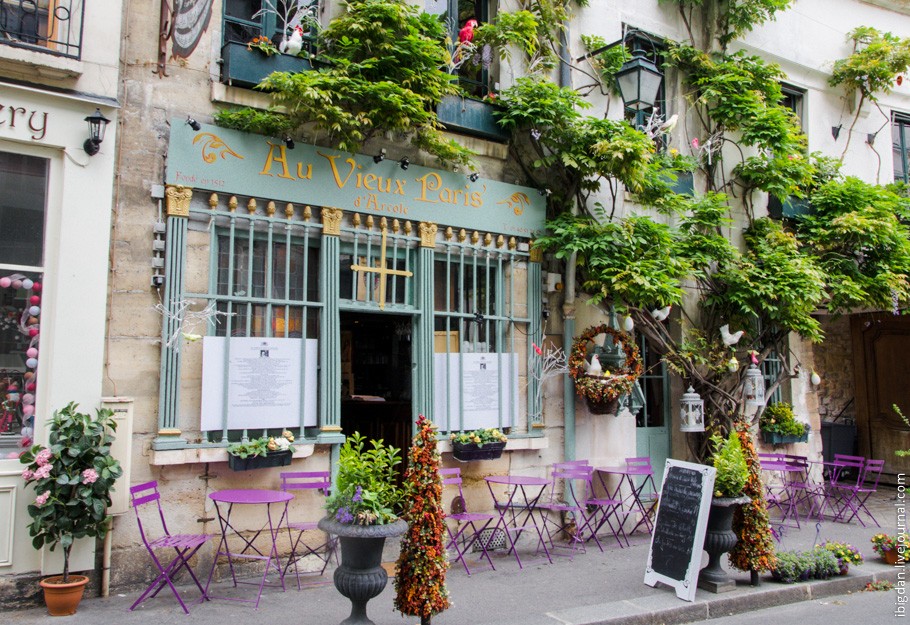 But it is more than 500 years without interruption:  And among this Parisians live. It is clear that for them the 19th century - a remake  - Many still images, all in one post does not fit. Paris left mixed feelings. Historically very interesting, especially if you study the lives of all these the Louis - around every corner traces of their activity. Dumas fans here, too, in a rush  But the Parisians live in the city, touristy, machinery and vagabonds - personally I do not understand. I could not. Paris - like Peter, in a town to be born or to hold youth to love him. General, the more I travel, the more I realize that we have a well. Especially when spring and when nobody is attacking. |



ADVERTISEMENT